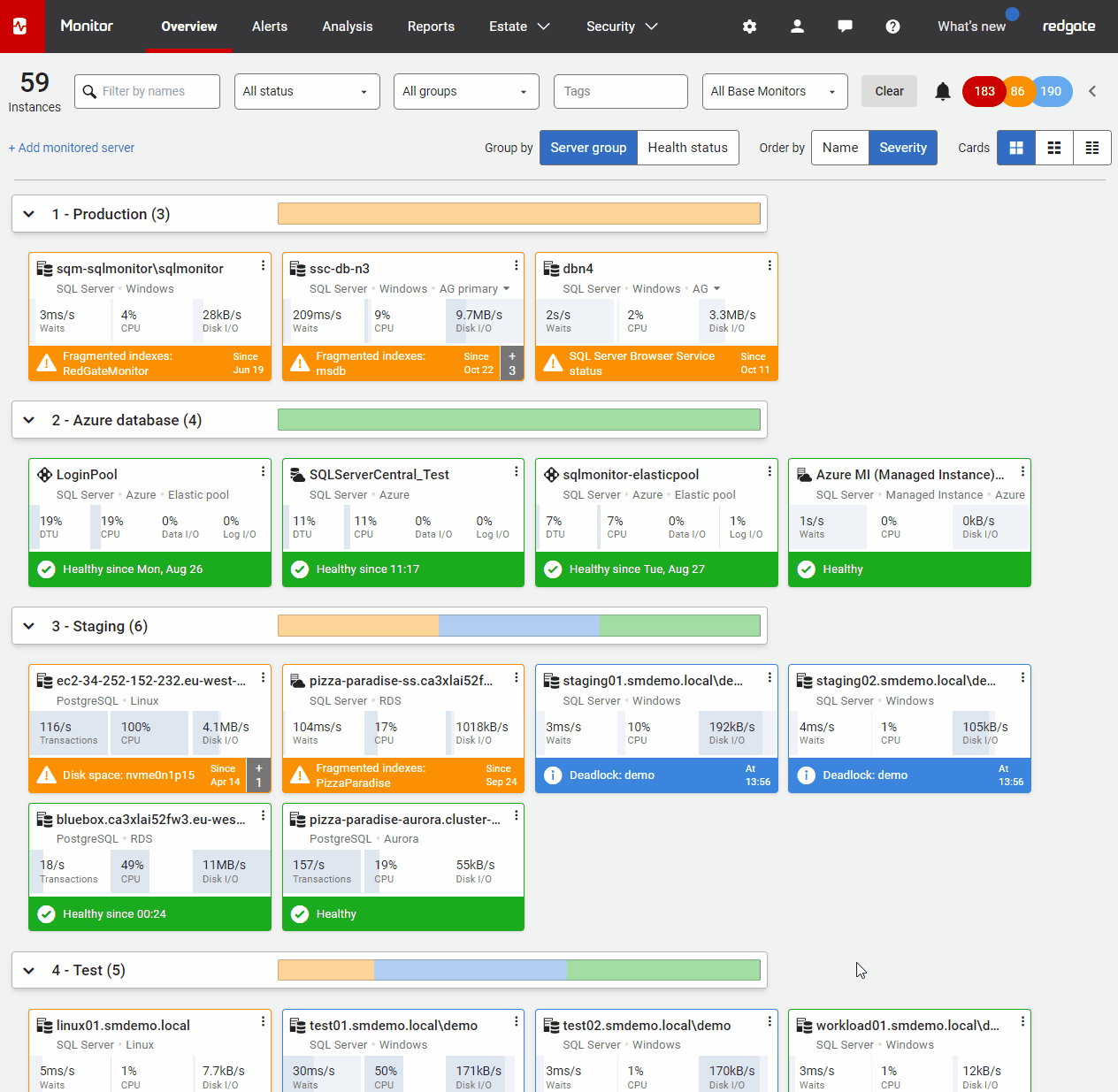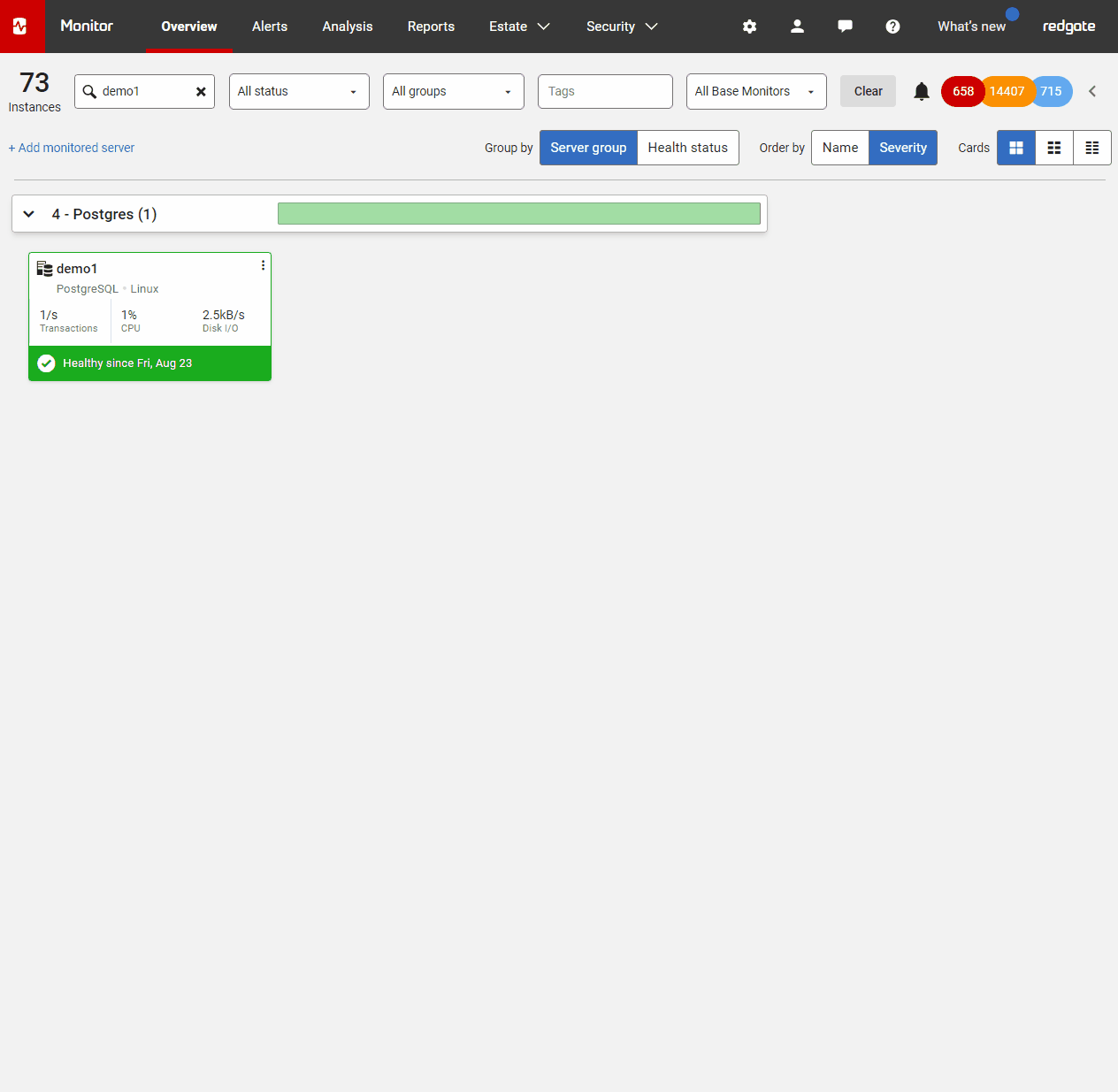Setting aliases for monitored servers
Published 28 August 2024
Aliases allow you to assign meaningful and contextual names to your monitored database instances, enhancing information sharing and view customization. For example, you can set aliases to reflect the instance’s role, the application it supports, the business unit it belongs to, or any other relevant information. This enables you to create custom views on the global dashboard or estate pages based on these aliases for more efficient monitoring and reporting.
Why Use Aliases?
- Enhanced Identification: Aliases provide a clear and concise way to identify and manage instances, particularly in environments with numerous servers.
- Consistency: They help maintain a uniform naming convention across different tools and platforms.
- Descriptive Clarity: Aliases can offer more descriptive names, making it evident what each instance is used for, which is especially beneficial in complex environments.
- Operational Efficiency: Using aliases can streamline locating and managing instances, reducing the likelihood of errors.
Aliases can be set from two locations:
1. Global Dashboard
2. Monitored Servers
Setting Aliases via PowerShell
For users who prefer automation or scripting, PowerShell can be utilized to set aliases. It allows for quick and efficient management of multiple instances, especially in large-scale environments. Check the example on Update-RedgateMonitorMonitoredObject.






